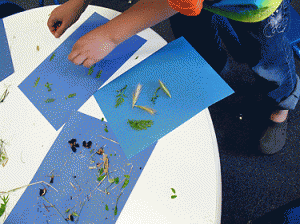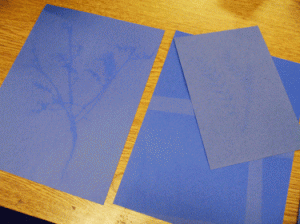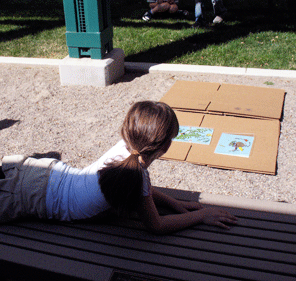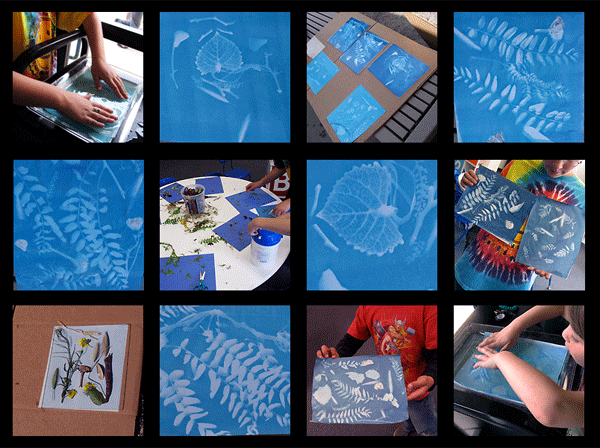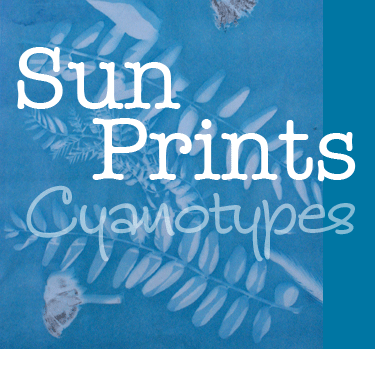 For our Cool After School program on April 20, we took a field trip into the rose garden surrounding the library to find material for making sun prints.
For our Cool After School program on April 20, we took a field trip into the rose garden surrounding the library to find material for making sun prints.
It was a beautiful day, and the kids had a blast running around in search of interesting weeds, leaves, and seedpods for their sun prints. In our shade structure, we discovered some mushrooms, which we added to our collection.
We used the cyanotype process, which is the same process that was used to make architectural and engineering blueprints. Although the process was discovered by the English scientist and astronomer Sir John Herschel in 1842, it was the English botanist and photographer Anna Atkins who first used the process to create photograms to document plant life. Because of her pioneering work, she is regarded as the first female photographer.
As an experiment, we made some sun prints using regular construction paper, with an exposure of about three hours. It worked, but the images were faint and not nearly as exciting as the ones we made using specially treated photosensitive paper.
We used regular paper to work out our designs, then quickly moved them onto the special paper, keeping it covered with a piece of cardboard to limit its exposure to light until we took it outside.
Covering the vegetation with a piece of clear plexiglass to keep it from blowing away, we exposed the designs to the sunlight and waited for several minutes.
Then we removed the plant material and rinsed the paper in trays filled with water. (We added a little freshly squeezed orange juice to the water in order to achieve a deeper blue color.)
Getting to mess around with water added an extra dimension of fun to the project!
The finished designs were even more beautiful than we could have imagined!

